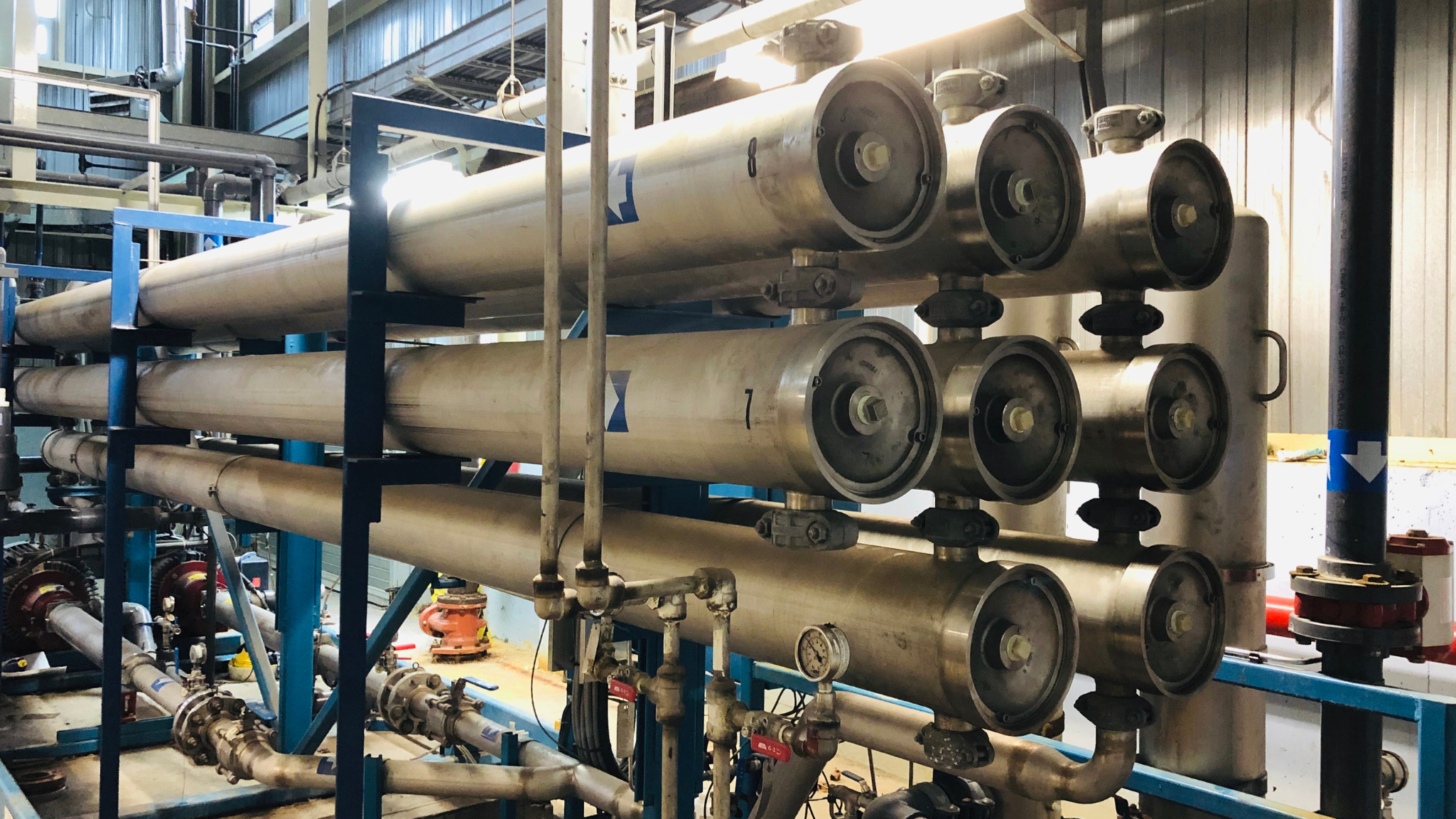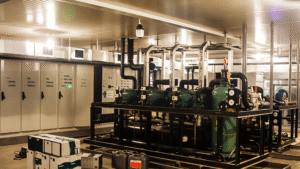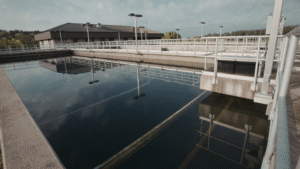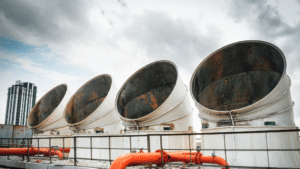Water quality is a priority not only for households but also for industries and institutions where reliable clean water directly impacts safety, compliance, and efficiency. In these settings, reverse osmosis (RO) technology has become a cornerstone for producing purified water. At the center of every RO system is the reverse osmosis membrane, a thin barrier designed to separate water molecules from dissolved salts, minerals, and other contaminants. Its performance determines whether facilities can meet quality standards while keeping systems efficient and cost-effective.
However, membranes face a serious challenge: scaling. When minerals like calcium, magnesium, and silica in source water exceed their solubility limits, they begin forming deposits on the membrane’s surface. This buildup reduces flow, forces higher operating pressures, and ultimately compromises the lifespan of the filtration system. For industrial operators, scaling means higher energy consumption, costly downtime, and increased risk of noncompliance. For households, it translates into reduced system efficiency and shortened filter life in a house water filtration system.
For professionals in Pennsylvania and Ohio, where ETI serves as a trusted chemical blending partner, these challenges are especially pressing. Regional industries such as power generation, manufacturing, and food processing rely on RO systems for consistent water quality, while distributors and engineers must ensure reliable performance in the face of scaling risks. Anti-scalants provide a practical and proven solution by keeping deposits from forming, safeguarding both industrial systems and house water filter systems, and helping operators and distributors maintain customer satisfaction.
The Basics of Reverse Osmosis Membranes
At the core of any RO system is the RO membrane, the component responsible for removing contaminants that other filters cannot catch. Unlike a simple sediment filter, which only blocks larger particles, the membrane functions on a microscopic scale. It relies on semi permeable membranes—engineered barriers with pores small enough to allow water molecules to pass through while rejecting dissolved salts, minerals, and impurities. This is the defining process of reverse osmosis filtration, a technology that has become standard for both residential and industrial applications.
Modern membranes are typically built from thin film composite (TFC) materials. These consist of layered polymers that provide high rejection rates of contaminants while maintaining durability under varying water pressure conditions. The TFC design makes it possible for RO membranes to filter out not only minerals such as calcium and magnesium but also harmful substances like lead, arsenic, and microorganisms. This layered construction is what makes reverse osmosis so effective at transforming poor source water into safe, high-quality drinking water or purified process water.
Because of their precision, RO membranes are widely used in diverse settings. In residential applications, a house water filter system often incorporates an RO stage to provide families with better-tasting drinking water and to protect household appliances from mineral deposits. In industrial and commercial operations, the same principle applies but at a larger scale, where protecting equipment, ensuring compliance, and delivering consistent filtration system performance are essential. Whether in a home kitchen or a manufacturing plant, the RO membrane is the critical component that enables the system to separate contaminants from clean water efficiently.
Why Scaling is a Threat to RO Membranes
Although reverse osmosis membranes are highly effective at removing impurities, they are also vulnerable to a persistent issue: scaling. Scaling occurs when dissolved minerals in the water supply reach concentrations that exceed their solubility limits. Once this happens, the minerals begin forming hard deposits on the membrane surface. Over time, these layers create resistance to water flow, undermine filtration performance, and drive up operational costs.
Common Scaling Minerals
The most frequent contributors to scaling in both residential and industrial systems include:
- Calcium carbonate – one of the most common scales, forming stubborn deposits that clog membranes.
- Magnesium salts – responsible for hardness and dense deposits that are difficult to remove.
- Silica – less common but extremely problematic, forming tenacious scaling layers that conventional cleaning often fails to address.
- Iron and other trace metals – which can precipitate and combine with organics to create fouling layers.
Impacts of Scaling on System Performance
When these minerals accumulate on the surface of the membrane, the results are far-reaching:
- Reduced flow rates – Scaling restricts passage of water molecules, forcing pumps to work harder.
- Increased water pressure requirements – More energy is needed to maintain throughput, raising operational costs.
- Shortened membrane lifespan – Scale places mechanical stress on the layers of the membrane and leads to premature failure.
- Higher risk of corrosion – Deposits create localized environments that accelerate corrosion in surrounding pipes and system components.
- Declining water quality – As fouling builds up, impurities slip through, compromising both drinking water safety and industrial processes.
Relevance Across Applications
Scaling is not just an industrial concern. In homes, mineral buildup can affect a house water filter system, reducing its ability to deliver clean drinking water and increasing wear on household appliances such as dishwashers, water heaters, and refrigerators. For industrial operators, scaling translates into costly downtime, frequent cleanings, and reduced compliance with water quality regulations.
Scaling, therefore, represents one of the greatest threats to RO system reliability. This is where anti-scalants play a critical role, providing chemical strategies to keep membranes clean and efficient.
How Anti-Scalants Work
To safeguard a reverse osmosis membrane against scaling, operators rely on specially formulated chemicals known as anti-scalants. These agents prevent minerals from crystallizing and adhering to the surface of the membrane, ensuring that flow remains consistent and the system maintains high efficiency. Anti-scalants act at very low concentrations, often in parts per million, yet their impact is substantial.
1. Threshold Inhibition
Scaling begins when dissolved minerals like calcium, magnesium, or silica reach saturation and begin forming deposits. Anti-scalants interrupt this process by delaying nucleation, the stage where dissolved salts attempt to form crystals. By holding these salts in solution longer, the chemicals keep them from attaching to the membrane prematurely.
2. Crystal Modification
Even when crystals do begin to form, anti-scalants change their structure. Instead of growing into dense, hard scales, the crystals are distorted into irregular shapes. These modified structures have weaker bonding properties, making them less likely to adhere to the membrane surface or other system materials.
3. Dispersion of Particles
Another essential mechanism is dispersion. Anti-scalants impart electrical charges to suspended particles, forcing them to repel one another. This electrostatic action keeps particles from clustering into larger, harder-to-remove deposits. In turn, suspended matter remains mobile, allowing the system’s flow to carry it toward the reject stream and out through the drain.
4. Silica and Specialty Control
Silica is among the most difficult contaminants for RO systems because it does not behave like typical salts. Left unchecked, it can create stubborn glass-like deposits. Advanced anti-scalant blends incorporate specialized agents that prevent silica polymerization, ensuring that silica remains soluble and less likely to foul membranes. Some formulations also address iron, barium, and strontium scales, which pose problems in specific source water conditions.
5. Protective Coating Effect
In certain cases, anti-scalants leave behind a microscopic coating on membrane surfaces. This invisible layer acts as a barrier between the membrane and scaling ions, further reducing the chance of bonding and buildup. This is particularly beneficial in systems dealing with aggressive water chemistries.
Efficiency at Low Doses
A key advantage of anti-scalants is their effectiveness at very small dosing levels. Unlike acids or aggressive cleaning agents, anti-scalants can operate efficiently in low concentrations without damaging the membrane layers or introducing harsh chemicals. This balance makes them a cost-effective and sustainable solution for protecting RO systems over the long term.
Putting It All Together
Through threshold inhibition, crystal modification, dispersion, and specialty control, anti-scalants provide multi-layered protection against scaling. Without them, even the most advanced thin film composite membranes would eventually succumb to mineral buildup, reducing performance and risking system downtime. With them, operators and homeowners alike can trust that their RO systems will continue delivering high-quality water with fewer interruptions and lower costs.
Benefits of Using Anti-Scalants in RO Systems
The use of anti-scalants provides advantages that go beyond preventing mineral deposits. By protecting the reverse osmosis membrane from fouling, these chemicals directly improve the reliability and sustainability of the entire system.
Extended Membrane Lifespan
Scaling is one of the primary reasons RO membranes fail prematurely. With proper dosing of anti-scalants, membranes last significantly longer before requiring replacement. This not only reduces maintenance frequency but also lowers costs associated with equipment downtime and service calls.
Consistent Water Quality
A clean membrane is better able to separate contaminants from clean water. By controlling scaling, anti-scalants help ensure steady production of purified water for both industrial operations and residential applications. Facilities benefit from reliable compliance with water standards, while households enjoy better-tasting drinking water.
Reduced Waste and Operating Costs
Anti-scalants improve efficiency by keeping water moving through the membrane at optimal flow rates. This reduces the need for aggressive chemical cleanings and cuts down on wastewater discharge, lowering both operational costs and environmental impact. For industries under strict discharge regulations, these savings are especially valuable.
Improved Customer Satisfaction
Whether for industrial clients relying on continuous production or families depending on clean water for daily use, fewer system interruptions lead to higher trust and customer satisfaction. Anti-scalants protect the system quietly in the background, allowing operators and homeowners to focus on other priorities without worrying about scaling problems.
In short, anti-scalants provide a layered benefit: they protect valuable assets, maintain water quality, reduce waste, and improve the overall economics of reverse osmosis operation.
Case Applications: From Industrial Plants to Homes
Anti-scalants are used across a wide spectrum of reverse osmosis applications, ranging from large-scale desalination projects to residential water treatment systems. Their flexibility makes them essential in any setting where scaling threatens the performance of an RO system.
Industrial and Commercial Applications
In industries such as power generation, food and beverage processing, and manufacturing, RO units must handle large volumes of challenging feedwater. Seawater desalination plants, for instance, rely heavily on anti-scalants to prevent stubborn scale from minerals and salts. In these environments, scaling can bring production to a halt and compromise regulatory compliance. By keeping membranes clean, anti-scalants ensure continuous operation and protect multi-million-dollar investments in equipment.
Residential Applications
Anti-scalants are not limited to industrial use. In homes, they play a role in extending the effectiveness of a house water filtration system. Paired with a sediment filter and activated carbon for chlorine removal, anti-scalants help RO systems consistently deliver safe drinking water. Families benefit not only from better-tasting water but also from reduced wear on household appliances such as dishwashers, coffee makers, and refrigerators. Cleaner water means fewer mineral deposits inside pipes and fixtures, preserving efficiency over the long term.
Everyday Value
Whether producing thousands of gallons for a factory or a few liters for cooking at home, the principle is the same: without anti-scalants, mineral buildup can undermine system performance. With them, both industrial operators and homeowners achieve reliable water quality, lower operating costs, and confidence that their investment in reverse osmosis is fully protected.
ETI’s Role in Membrane Treatment Support
Protecting a reverse osmosis membrane requires more than just preventive chemicals. Over time, even the best systems can experience fouling from contaminants such as suspended solids, organic matter, or trace metals. ETI addresses these challenges with a complete suite of membrane treatments that help restore performance, extend equipment life, and improve overall system efficiency.
Comprehensive Membrane Care
ETI’s membrane program is designed to support every stage of operation:
- Pre-system treatments to prepare source water and protect upstream components.
- Membrane treatments including ANSI/NSF Standard 60-approved anti scale products and US-EPA-approved biocides for non-potable systems.
- Post-system treatments to stabilize water and prevent downstream scaling or corrosion in pipes and household appliances.
This layered approach ensures that issues like fouling, scaling, and leaks are managed proactively rather than reactively.
Cleaning and Technical Support
When scaling or biological growth does occur, ETI offers proven cost-effective membrane cleaners capable of restoring flow and reducing salt passage. Paired with laboratory support, hands-on troubleshooting, and product training, clients receive not only the right chemical solutions but also the expertise to apply them correctly. Technical resources such as private-labeled data sheets, safety guides, and application instructions are readily available to distributors and operators.
Tailored Service for Lasting Performance
ETI’s flexibility extends to custom formulations, packaging sizes, and direct shipment to plant sites across the United States and beyond. This adaptability allows facilities to keep their models operating at peak performance with minimized downtime. By combining innovation in chemistry with on-site expertise, ETI delivers membrane treatments that drive customer satisfaction and ensure the long-term reliability of RO systems.
Learn more about our membrane and other specialized treatments.
Conclusion
Scaling is one of the most persistent threats to reverse osmosis systems, undermining performance, increasing costs, and shortening the lifespan of valuable equipment. By using anti-scalants, operators and homeowners alike can protect their reverse osmosis membranes, maintain consistent water quality, and reduce both downtime and environmental impact. From preventing deposits to enhancing system efficiency, these treatments are not just an operational necessity but a long-term investment in reliable water management.
For facilities in regions like Pennsylvania and Ohio, where water quality challenges and regulatory pressures continue to grow, partnering with an experienced chemical solutions provider is critical. ETI stands out by offering comprehensive membrane treatments, technical expertise, and training that help both industrial operators and distributors keep their systems running at peak performance.
If you want to extend the life of your RO systems, lower operating costs, and ensure compliance with evolving standards, ETI can help. Contact ETI today to learn how our custom-formulated anti-scalants and membrane treatment programs can safeguard your operations for years to come.
Frequently Asked Questions (FAQs)
How does reverse osmosis reduce total dissolved solids (TDS)?
An RO membrane is designed to reject salts and other dissolved materials, significantly lowering total dissolved solids. By forcing water molecules through the semi permeable layers, the system separates clean water from minerals, metals, and other contaminants.
What happens if my RO system runs under low pressure?
Low pressure reduces the driving force that pushes water through the membrane. This leads to slower flow rates, higher salt passage, and reduced overall efficiency. A properly sized pump is critical to maintaining reliable operation.
Can reverse osmosis remove lead, arsenic, salt, and fluoride?
Yes. RO membranes are highly effective at removing heavy metals such as lead and arsenic, as well as dissolved salt and fluoride. These contaminants are among the most important reasons households and industries rely on reverse osmosis filtration.
How often should RO filters or membranes be replaced?
Filters in an RO system, including the sediment filter and carbon stage, typically need to be replaced every 6–12 months. The membrane itself can last several years with proper use of anti scale treatments to prevent fouling.
Do RO systems remove microorganisms and improve odor in water?
Yes, RO membranes block most microorganisms, including bacteria, while carbon stages reduce odor caused by chlorine and organic matter. Together, these steps ensure better-tasting drinking water.
Can reverse osmosis treat water contaminated with oil or industrial chemicals?
While RO membranes can reduce many organic chemicals, they are not a complete solution for oil contamination. In such cases, pretreatment and specialized filtration system designs are recommended.
What advantages do whole house RO systems provide?
A whole house RO system treats all incoming supply water, ensuring that every tap delivers clean, softened water. This protects plumbing, appliances, and improves overall customer satisfaction for both drinking and utility uses.





